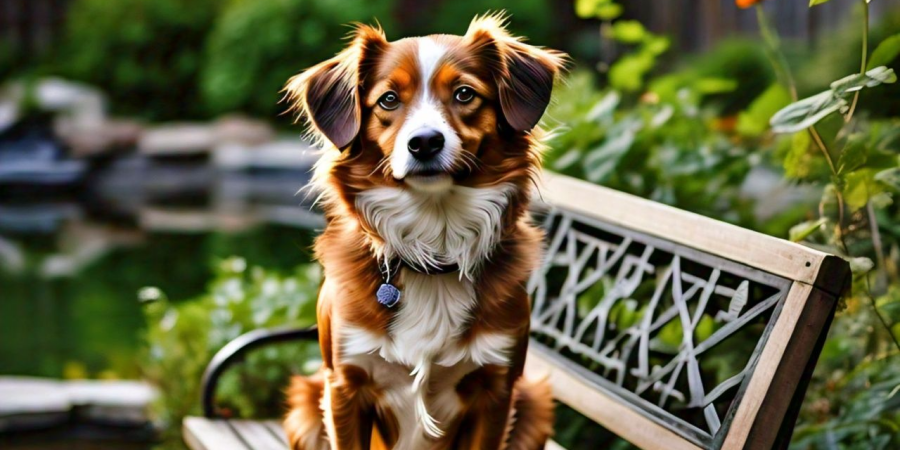

Here's a brief overview of a dog's life and character:
*Life:*
- Average lifespan: 10-13 years (depending on breed and size)
- Stages: Puppyhood (0-1 year), Adolescence (1-2 years), Adulthood (2-7 years), Seniorhood (7+ years)
- Needs: Regular exercise, training, socialization, veterinary care, love, and attention
*Character:*
- Loyal and loving companions
- Intelligent and trainable, but can be stubborn at times
- Social animals that thrive on interaction and pack dynamics
- Communicate primarily through body language and vocalizations (barking, whining, growling)
- Can be playful, energetic, and mischievous, but also gentle and affectionate
- Each breed and individual has a unique personality, but most dogs share a strong instinct to please and protect their human family
Of course, every dog is an individual, and their life and character can vary based on breed, upbringing, and life experiences. But overall, dogs are beloved companions and an integral part of many human families!
Laika, the space dog!
Laika, also known as Kudryavka or Little Curly, was a Soviet space dog who became the first living creature to orbit the Earth on November 3, 1957. She was a stray dog from Moscow, weighing about 11 pounds (5 kg), who was chosen for the Sputnik 2 mission due to her small size and calm temperament.
Laika's historic flight lasted 162 days, but unfortunately, she did not survive the journey. The technology at the time did not allow for her to be safely returned to Earth, and she died due to overheating and stress caused by the flight.
Laika's pioneering journey played a crucial role in the development of human spaceflight and animal research in space. She will always be remembered as a hero and a symbol of exploration and discovery!
Some interesting facts about Laika's mission:
- Laika was originally named Kudryavka, but was later renamed Laika, which means "barker" in Russian.
- She was placed in a special capsule within the Sputnik 2 spacecraft, with food, water, and a oxygen supply.
- Laika's heart rate and breathing were monitored during the flight, providing valuable data for future human spaceflight.
- Laika's mission helped scientists understand the effects of space travel on living organisms and paved the way for future animal and human spaceflight.
Dog food! Here's a brief overview:
*Types of Dog Food:*
1. *Kibble* (dry food): Convenient and cost-effective, available in various flavors and textures.
2. *Canned Food* (wet food): Higher moisture content, often used as a topper or mixed with kibble.
3. *Raw Food*: Uncooked, unprocessed meat, bones, and vegetables, often fed as a homemade diet or commercial raw food.
4. *Grain-Free*: Formulated without grains, often using alternative carbohydrates like potatoes or sweet potatoes.
5. *Limited Ingredient Diets*: Simplified ingredient lists for dogs with food sensitivities.
*Nutritional Considerations:*
1. *Protein*: Essential for muscle growth and maintenance (e.g., chicken, beef, fish).
2. *Fat*: Provides energy and supports skin health (e.g., omega-3 fatty acids).
3. *Carbohydrates*: Serve as energy sources (e.g., whole grains, fruits, vegetables).
4. *Vitamins and Minerals*: Crucial for overall health (e.g., vitamin D, calcium).
5. *Moisture*: Important for digestion and urinary health.
*Life Stage Considerations:*
1. *Puppy Food*: Formulated for growth and development (typically up to 1 year).
2. *Adult Food*: Maintains overall health (1-7 years).
3. *Senior Food*: Supports aging joints and health (7+ years).
*Consult Your Veterinarian:*
To determine the best diet for your furry friend, consult with your veterinarian, considering factors like:
- Breed
- Age
- Health conditions
- Allergies
- Lifestyle
Remember, every dog is unique, and their dietary needs may vary.
Here are some stress busters for dogs:
1. *Exercise*: Regular physical activity, such as walks, runs, or playtime, helps reduce anxiety and stress.
2. *Mental Stimulation*: Engage your dog's mind with puzzle toys, obedience training, or scent work.
3. *Calming Aids*:
- Pheromone diffusers (e.g., Adaptil)
- Calming collars (e.g., Thundershirt)
- Anti-anxiety medications (consult a veterinarian)
4. *Sensory Relief*:
- Massage or gentle petting
- Soft music or white noise
- Aromatherapy (e.g., lavender)
5. *Environmental Changes*:
- Reduce noise levels
- Create a quiet space or "den"
- Increase social interaction (if social isolation contributes to stress)
6. *Treats and Chews*:
- Calming treats (e.g., L-theanine or chamomile-infused)
- Long-lasting chews (e.g., bully sticks or Kongs)
7. *Desensitization and Counterconditioning*: Gradually expose your dog to stressors, associating them with positive outcomes.
8. *Professional Help*: Consult a veterinarian, animal behaviorist, or certified dog trainer for personalized guidance.
Remember, every dog is unique, so it's essential to tailor stress-reducing strategies to your dog's specific needs and personality.
